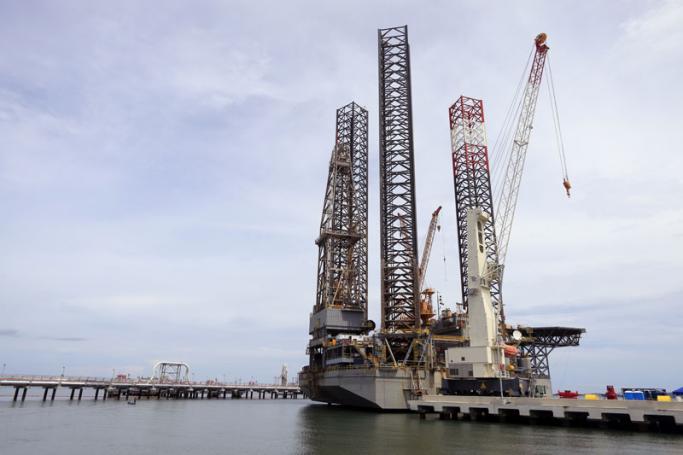Woodside has recently announced that it was suspending further drilling offshore in the southern Rhakine state as they will evaluate the commercial viability of gas quantities found in Blocks A-6 and AD- 7. It is reported that the suspension will be until 2018. While a drilling suspension is not uncommon in the offshore markets, concerns over the future of the offshore gas fields deepened when Woodside cancelled a seismic tender ten days ago. This does not bode well for the sector and particularly for those that plan to build supply bases to provide support services to offshore. It goes without saying, that the Woodside drilling campaign spurred on interest in the need for an in-country Offshore Supply Base Development (OSB) solution to replace logistics coming from Singapore.
In earlier pieces I debated the need for OSB development in the Country, stating that the projected gas field volumes would support up to three OSB’s at full gas field operations. Since those predictions in 2016, there have been some significant changes that suggest this could be an ambitious target. There are some indicators that now suggest that a single supply base in the short to medium term is warranted, with a possibility of two bases as a maximum. These indicators include:
Woodside’s delay,
Chevron’s wish to sell their block,
Talk of Shell and Total reviewing their portfolio’s in Myanmar
Difficulty in attracting investors for offshore gas exploration.
Further complicating the issue is the number of MIC’s approval that has been granted for the construction of OSB’s. To date, there have been six approvals given, one of which an international investment company. What is of concern is the approvals appear to have been granted without reference to specific requirements in the location and construction of the bases. When reviewing the various site locations, some key issues emerge. These apply to all current locations and have driven development costs up to the $95m level versus the initial $30m anticipated capital outlay. The following issues present issues:
Water depth requiring dredging and backfill operations
Lack of infrastructure and connectivity to main roads (sites require bridges and or roads to be built)
Lack of electrical power and connectivity to the grid
Access to labour markets
Poor access to airport
Lack of at least 4 star catered accommodation
Poor access to medical / hospital emergency response
Location near to environmentally and community sensitive areas.
With increased development costs comes the need for greater utilisation of the facility or higher charges. In other words, it becomes the old economic equation of either you chase volumes to generate cash or increase margins to satisfy the business case breakeven point. This makes it problematic for investors in deciding whether to enter the market. This decision becomes more problematic when there is still talk of MOGE, the government instrumentality, still looking at establishing their own OSB.
In a sense, Myanmar’s OSB supply has copied the recent history of the offshore vessel market, i.e. going from undersupply to one of oversupply. There are options, one of which is to change the purpose of the OSB from dedicated oil and gas to act as a transhipment facility for other products and services or a simple forward base (laydown area). The transhipment repurpose would be of particular attraction to Chinese interest in Kyauk Phyu in the Rhakine State. Note that there is already infrastructure connectivity between Kyauk Phyu and China’s Yunnan province. Furthermore, China’s Belt Road Initiative would have the finances to build the facility as the decision will be made taking strategic imperatives into account and not solely commercial ones. Another factor in play is China’s willingness to help resolve the conflict in Rhakine State as well as not publically interfere with the internal political machinations of Myanmar.
It is a pity that Myanmar’s OSB initiatives have stumbled onto the set of Nightmare on Elm Street 2. What started as a process going from sitting to running without learning how to crawl has created a disjointed OSB approach. This has been impacted on by geo-political issues affecting foreign investment and a decline in gas reserve projections and decline in offshore activity. Either way, you look at it Myanmar cannot afford to have more than one OSB at this stage, or risk participating in the movie Nightmare on Elm Street 3.
You are viewing the old site.
Please update your bookmark to https://eng.mizzima.com.
Mizzima Weekly Magazine Issue...
14 December 2023
Spring Revolution Daily News f...
13 December 2023
New UK Burma sanctions welcome...
13 December 2023
Spring Revolution Daily News f...
12 December 2023
Spring Revolution Daily News f...
11 December 2023
Spring Revolution Daily News f...
08 December 2023
Spring Revolution Daily News f...
07 December 2023
Diaspora journalists increasin...
07 December 2023
Myanmar migrant workers arrested in Mae Sot












